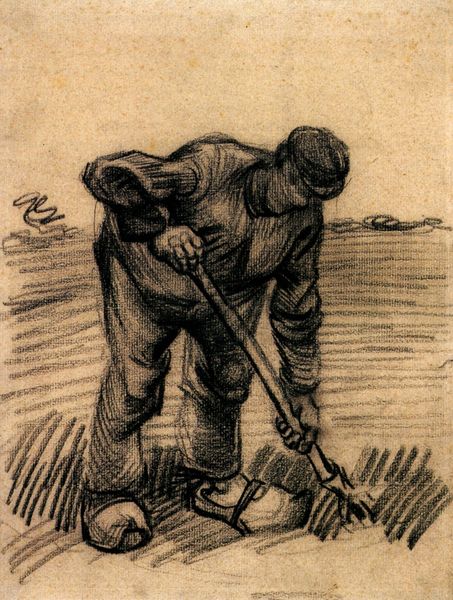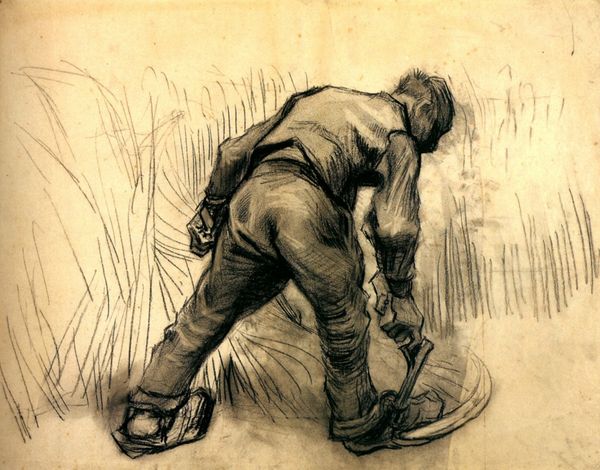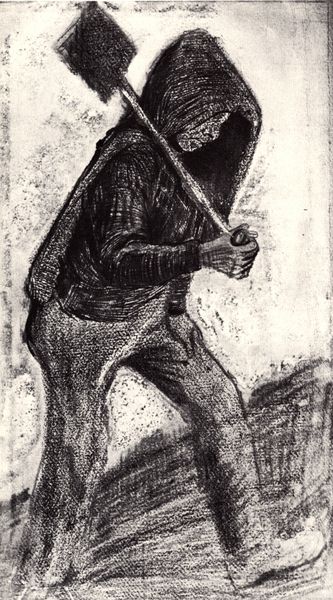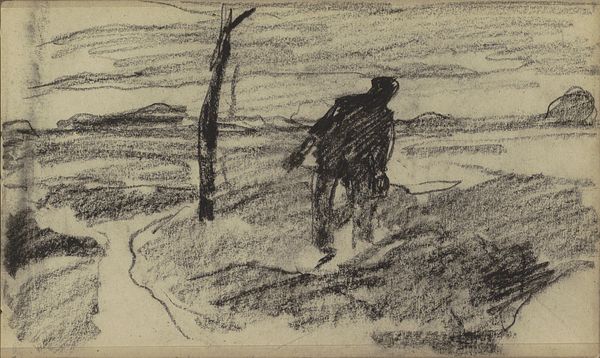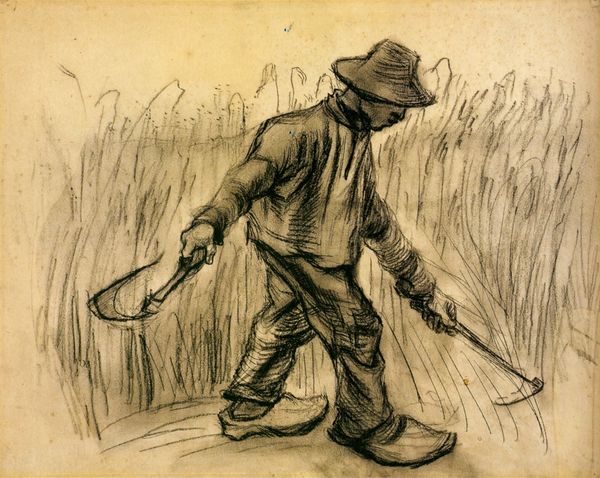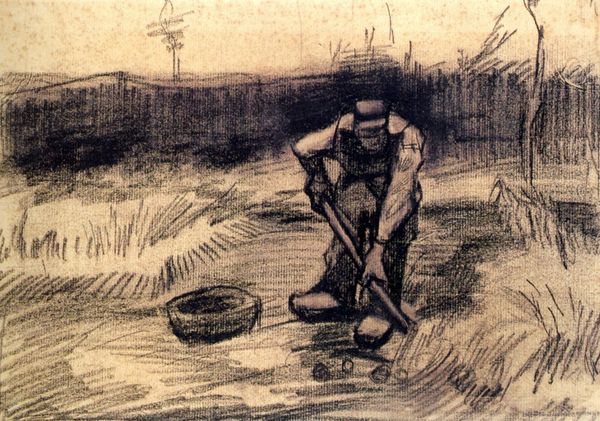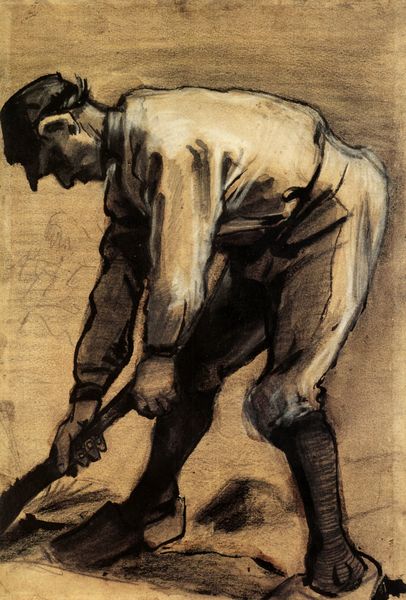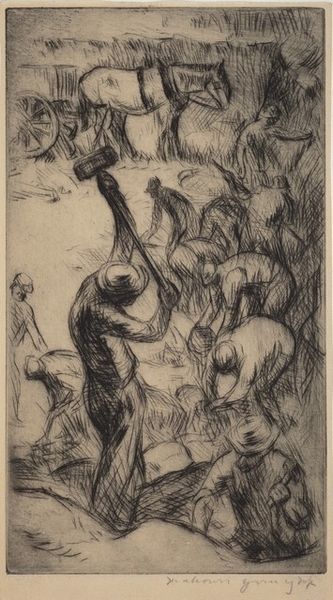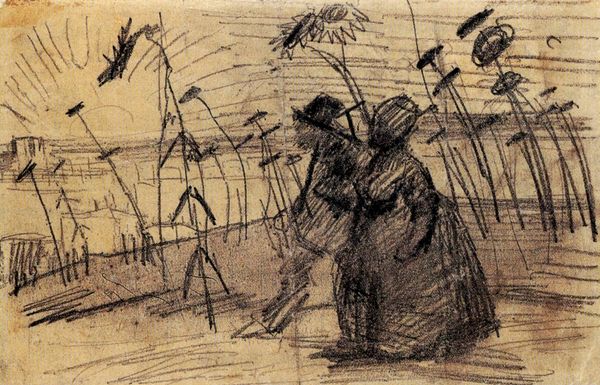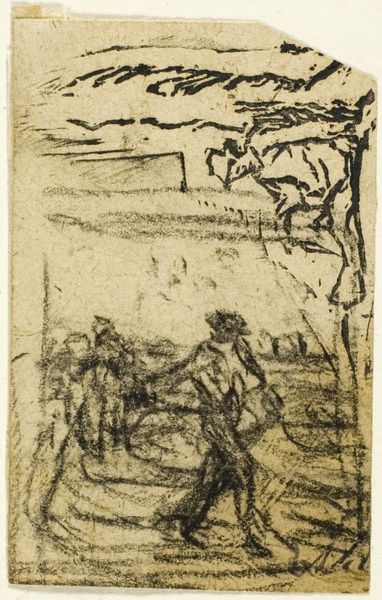
#
pencil drawn
#
amateur sketch
#
light pencil work
#
pencil sketch
#
charcoal drawing
#
personal sketchbook
#
pencil drawing
#
detailed observational sketch
#
pencil work
#
fantasy sketch
Copyright: Public domain
Editor: Here we have Vincent van Gogh’s “Sowers,” created in 1882. It’s a pencil drawing, and it’s rather striking. The texture is really built up in places, creating strong contrasts. What do you see in this piece? Curator: The first thing that grabs my attention is the interplay of lines. Notice how Van Gogh uses the hatching and cross-hatching to define form and space. The parallel lines create depth, especially in the furrows of the field. But also note that the sky area does not repeat this texture; why might Van Gogh elect to leave that comparatively blank? Editor: I guess that it emphasizes the sowers as subjects. The dark ground has so much visual weight. Curator: Precisely. Let’s examine the composition itself. We have two figures positioned asymmetrically, guiding our eye through the space, left to right, from foreground to background. How would you describe the treatment of scale regarding these figures? Editor: Well, the sower in the front is larger than the figure further back; that indicates depth. But the front figure also seems to loom a bit, he has so much presence. Curator: Good observation. The dramatic foreshortening, combined with the dense application of pencil strokes, creates an impactful contrast, endowing the scene with the monumental quality. And even considering the color is practically absent, how do the distinct material contrasts drive you as a viewer? Editor: It's really interesting to focus on the construction of the piece itself. It emphasizes van Gogh's skill, I had not been aware of it. Curator: Indeed, and it's through careful analysis of the artwork's intrinsic elements, that we are able to discover so much.
Comments
No comments
Be the first to comment and join the conversation on the ultimate creative platform.
